A. Introduction – Why This Blog Matters
We watch positive mindset videos, read books, listen to podcasts and for some time we feel good. At that time, we promise ourselves to “start with tomorrow”.
We think that tomorrow will be a better day and everything will start new and fresh.
But the next day we find that the same “tomorrow” becomes “today” again. And then the same overthinking, procrastination, and social media scrolling to escape all this. Meaning we keep ourselves busy with temporary solutions, but the real problem remains the same.
We all know our inner pain, but the solutions we try are only on the surface level. This is why the internal problem remains as it is, without any real improvement. When I was also exploring these topics, I found two modern psychology books:
• Don’t Believe Everything You Think by Joseph Nguyen
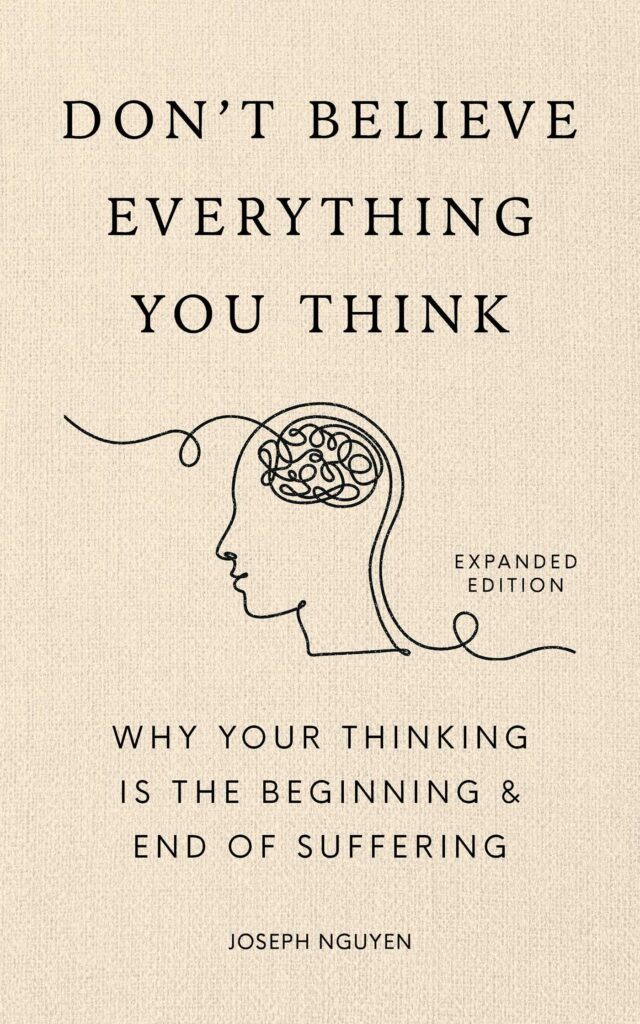
• Rewire Your Anxious Brain by Nick Trenton
And I was shocked when I saw how similar their concepts are to Chinese philosophy Tao and Indian philosophy Bhagavad Gita. The things that were explained thousands of years ago in Gita and Tao, are being presented today in a simplified and scientific form by modern psychology books.
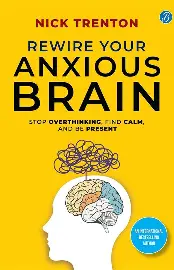
• Tao principle: “Flow with nature”
• Gita principle: “Nishkam Karma” (do your work without any attachment and do not think of yourself as the doer)
Both these approaches provide us with practical solutions to deal with anxiety and stress.
The main purpose of this blog is to show you that:
• Anxiety and stress are not new problems.
• Their solutions are also not the latest discovery.
• These principles have been in existence for thousands of years, we just ignored them.
If we apply these principles in our modern life, we can make our life more joyful, stress-free and our work more effective.
B. The Modern Anxious Mind
The biggest enemy of today’s generation is one’s own mind. Think, that you got a message from your boss to come and meet him in the office tomorrow. Now a new file opens in your mind as to why the boss must have called you, “it seems he does not like my work, if he says something then I will give this answer, then the boss will say to leave the job, I will also say that it is fine, then I will have to find a new job, till then I will have to sit idle, then how will I pay the EMI, how will I manage the household expenses, what will people say”. You can see that even if all this does not happen tomorrow, its probability is very low, still a new file has opened in your mind till tomorrow morning, which will keep you in fear, tension and frustration.

This is the problem of the modern anxious mind.
1. Insights of Psychology
Joseph Nguyen’s book Don’t Believe Everything You Think makes it clear that the root cause of anxiety is often our own thoughts. We accept our thoughts as true, without checking. If the mind says “You will fail,” then we accept that as reality. Nick Trenton’s Rewire Your Anxious Brain gives a scientific angle. He says that anxiety comes from two places –
• Amygdala (emotional brain) → creates fear without reason, like the heart beat becoming faster without reason.
• Cortex (thinking brain) → imagines future scenarios and creates danger from them.
Meaning sometimes emotions scare us and sometimes overthinking gives us unnecessary tension.
2. Relatable Reality
• For Students: Most of the students who are preparing for any competitive exam, do not fail due to lack of knowledge, rather their performance goes down due to anxiety and fear.
• For Professionals: Office stress comes more from their mind-made “what if” scenarios than from their work. And the most dangerous thing is that this anxious brain drains our energy, focus, and confidence.
C. Timeless Wisdom that Matches
When we read about anxiety and stress, we think that these are just modern problems. But the reality is that ancient philosophies had already given the solution to these – we just forgot.
1. Tao Philosophy (China)
Tao means “the way” or “natural flow of life.” Taoism teaches a simple principle:
We often feel that we will control our thoughts or replace them with positive thoughts but Wu Wei says, understand your nature, do not force things, let them happen naturally. Just like water makes its own path, life also moves in the same way.
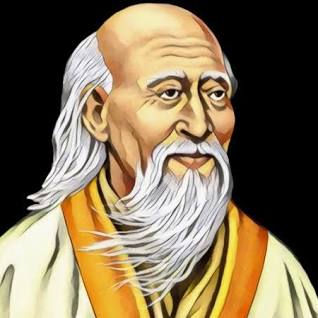
• If negative thoughts come to your mind, do not try to stop them.
• Just observe and let them pass, like changes in the sky.
• The more you resist, the more powerful they will seem.
The same concept exists in modern psychology too – “Don’t believe everything you think.”
Gita says that the biggest reason for anxiety is that we are considering ourselves as doers and are constantly thinking about the results that we are going to get. In Gita, Shri Krishna says, become calm, you don’t have to do anything. By becoming calm, you will be able to feel that infinite intelligence. Give yourself in the hands of that infinite intelligence like an instrument. While doing work, feel the joy of that work. Remove the ego from the way which is making you anxious. Bring yourself into that joyful flow state. You will definitely get a good result but now you must not be bound by worries.

🌿 Tao + Gita = One Message
• Tao says, “Go with the flow, don’t resist.”
• Gita says: “You are not the doer, observe your nature while working, keep your ego aside.”
• Modern books say: “Observe your thoughts so that by reducing them you can connect with infinite intelligence and make your work more joyful and life blissful.”
Three different sources, but the same message → Stress will reduce only when we learn to let go of things that are out of our control.
D. Bridging the Four Books
When I read “Don’t Believe Everything You Think (Joseph Nguyen)” and “Rewire Your Anxious Brain (Nick Trenton)”, and compared them to the Tao and the Bhagavad Gita, a common thread emerged:
👉 “Understand the mind, but don’t become its slave.”
Below is a simple comparison table that connects all the concepts:
| 📘 Modern Books | 🌏 Tao Philosophy | 📖 Bhagavad Gita | Practical Application |
| Don’t believe every thought – not every thought is true | Wu Wei – Let thoughts come and go like clouds | Samattva – Don’t react too much to whatever comes | Journaling: Write down your negative thoughts and observe them, don’t react |
| Rewire brain – New habits are possible with Neuroplasticity | Tao simplicity –Small daily flows in nature | Dhyana Yoga – Meditation means staying in the present and connecting with the Supreme Soul (Infinite Intelligence) | 10 min daily meditation (Being in present) + One small healthy habit (Reduce non-essential efforts) |
| Overthinking = stress | Flow like water – Don’t resist | Nishkam Karma – You are not the doer, consider yourself as the non-doer and leave yourself in the hands of nature | “Pause → Breathe → Act” |
| Identity ≠ Thoughts – you are not your thoughts | Be like nature – Simple, pure, beyond ego | Atman is eternal – Your real identity is your soul, not your body | Give every overthinking thought a name of a file, like if you are getting stressed thinking about office work then say to yourself “Hey, the office file has opened again” – name it to tame it. |
✨ Simple Takeaway
• Joseph Nguyen says: Don’t believe in every thought you have.
• Nick Trenton says: Train your brain, change your anxiety wiring.
• Tao says: Go with the flow, don’t fight it.
• Gita says: You are sad because your thoughts are separating you from that infinite intelligence.
They all converge at one point →
👉 “Know yourself. Observe thoughts, don’t become them. Flow naturally, not forcefully.”
E. Practical Tools for Students & Professionals
Theory is useful only when it is put into practice. By converting the teachings of Tao, Gita and modern psychology into simple tools, anxiety and overthinking can be easily handled.
1️⃣ STOP Technique for Overthinking
A simple and powerful method in which you can instantly interrupt your anxious mind.
S – Stop → Wherever you are, stop for a second.
T – Take a breath → Take a deep breath, bring your focus to the present moment.
O – Observe → See what you are feeling (thoughts + body sensations).
P – Proceed → Now take action calmly, without panic.

👉 For Students: Use STOP daily whenever you are nervous and the future is threatening.
👉 For Professionals: To calm nerves before a meeting.
2️⃣ Bhagavad Gita Mindset: Know yourself
Take your attention away from the result and focus only on the action. Be in the present, do not consider yourself as the doer and see yourself doing the work by staying in the present. Whenever there is tension, ask yourself why this tension is occurring. Whenever you do any work, observe whether you are able to enjoy that work, if not then see whether your attention is repeatedly going to the result.
👉 This attitude automatically reduces anxiety, because your focus is on the thing that is in your control.
3️⃣ Neuroscience Hack: Small Daily Habits
Nick Trenton’s book highlights that brain rewiring happens due to repetition.
• Do a little meditation every day, and meditation is not chanting any mantra or sitting with closed eyes, it is staying in the present and observing your thoughts
• Write gratitude every day, if you are feeling grateful you can’t have negative thoughts
• Be aware of the entertainment tools you choose
👉 These small things train the mind to choose calmness and focus instead of stress.
4️⃣ Tao-Inspired Simplicity: Do Less, Do Better
Anxiety has a hidden reason for overload – too much work, too much comparison, too much expectations. Tao teaches “keep it simple.”
• Make sure to keep some free time for yourself daily during which you are not doing anything
• Keep reducing non essential things from life, you will feel more efficient and blissful
As Bruce Lee said- “It’s not the daily increase but the daily decrease. Hack away at the unessential you will be at the source.”
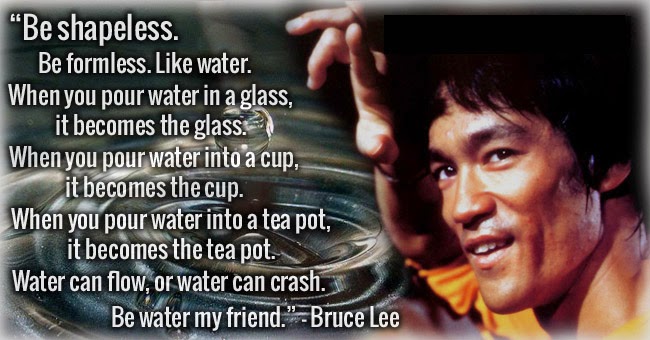
5️⃣ 2-Minute Breathing Reset
Quick tool that combines both worlds (science + spirituality).
• Close your eyes for 2 minutes and just focus on your breath.
• Inhale → Observe. Exhale → Let go.
• This is the “flow” of Tao and “meditation” of Gita, and also the relaxation response of neuroscience.
Whether you are a student or a professional, anxiety will definitely come. But through these tools you can master your mind, you will not become its slave.
F. Real-Life Scenarios
Sometimes a real story comes more important than theory. Let’s see how these principles can be applied in the lives of students and professionals.
📚 Scenario 1: Student before Exam
Rohit is a B. Pharm final year student. A day before the exam, his mind was running at full speed – “Will I remember it or not? If the paper is tough then my year will be ruined.”
He applied two things:
1. STOP Technique → He put down his pen, took a deep breath, and just observed that negative thoughts were coming to his mind.
2. Bhagavad Gita’s Nishkam Karma → he reminded himself: “My control is only in study, I have to enjoy the process, I have to achieve the purpose but the result is not in my hands.”
Later he realised that anxiety never caused any problem to his knowledge – it was just his mind and overthinking.
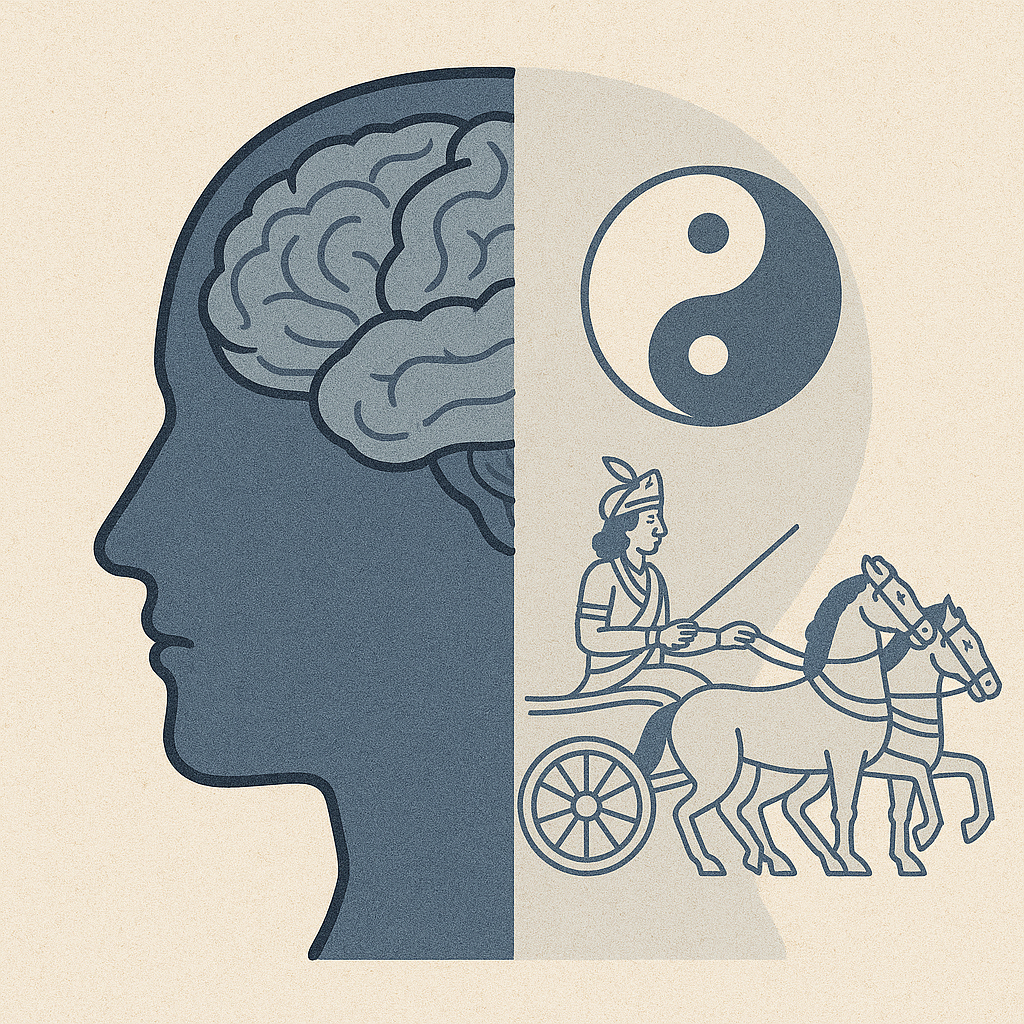
💼 Scenario 2: Professional before Big Presentation
Neha works in an MNC. She had an international client meeting in which she had to present. She was unable to sleep at night:
“If I make a mistake, what will the boss think? What if the clients are not impressed?”
She used three tools:
1. 2-Minute Breathing Reset → Outside the meeting room, She closed her eyes and focused on her breathing for 2 minutes.
2. Tao Simplicity → She felt a flow in her imagination and saw that things were happening around her, she was explaining points in a simple way.
3. Self-Affirmation (Joseph Nguyen + Gita combo) → She told herself: “I am not my thoughts. My job is to give my best, I am not worried about the result.”
Result? The clients were impressed; the boss was happy although she neither wanted to impress anyone nor was she wanted to make happy anyone; she was just expressing herself without any expectations in a flow
H. Conclusion – A Holistic Approach
Anxiety, stress and overthinking are the biggest problems of today. These problems not only reduce our efficiency but also disturb our behaviour and our family life. But the truth is that the solutions were always with us – we just had to remember them.
• Modern Psychology (Joseph Nguyen & Nick Trenton) has shown us scientifically that blindly following thoughts and ignoring brain wiring creates anxiety.
• Tao Philosophy has taught us not to go against the flow of life, adopt simplicity and acceptance.
• Bhagavad Gita gave us a golden formula – connect yourself with that infinite intelligence by not considering yourself a doer.
Three different sources, one truth → You have to master the mind, not become its slave.
🧭 7-Day Experiment for You
Whether you are a student or a working professional, start a small practice:
Day 1-2 → Use STOP technique for 2 minutes every day whenever you feel anxious.
Day 3-4 → Adopt a Nishkam Karma mindset – focus only on action, keep the result aside.
Day 5 → Tao-inspired declutter: make your study/work list simple (max 3 priorities).
Day 6 → Meditate for 10 minutes, just observe your breath.
Day 7 → Write a Journal: One day’s negative thoughts and how you reacted to them.
👉 In just one week you will feel that you have more control over your mind, not anxiety.
“Be still like water, act without attachment, and master your mind. Your thoughts are not meant to control you, they are meant to serve you.”
You can also visit our YouTube channels: Edumentor Ashish

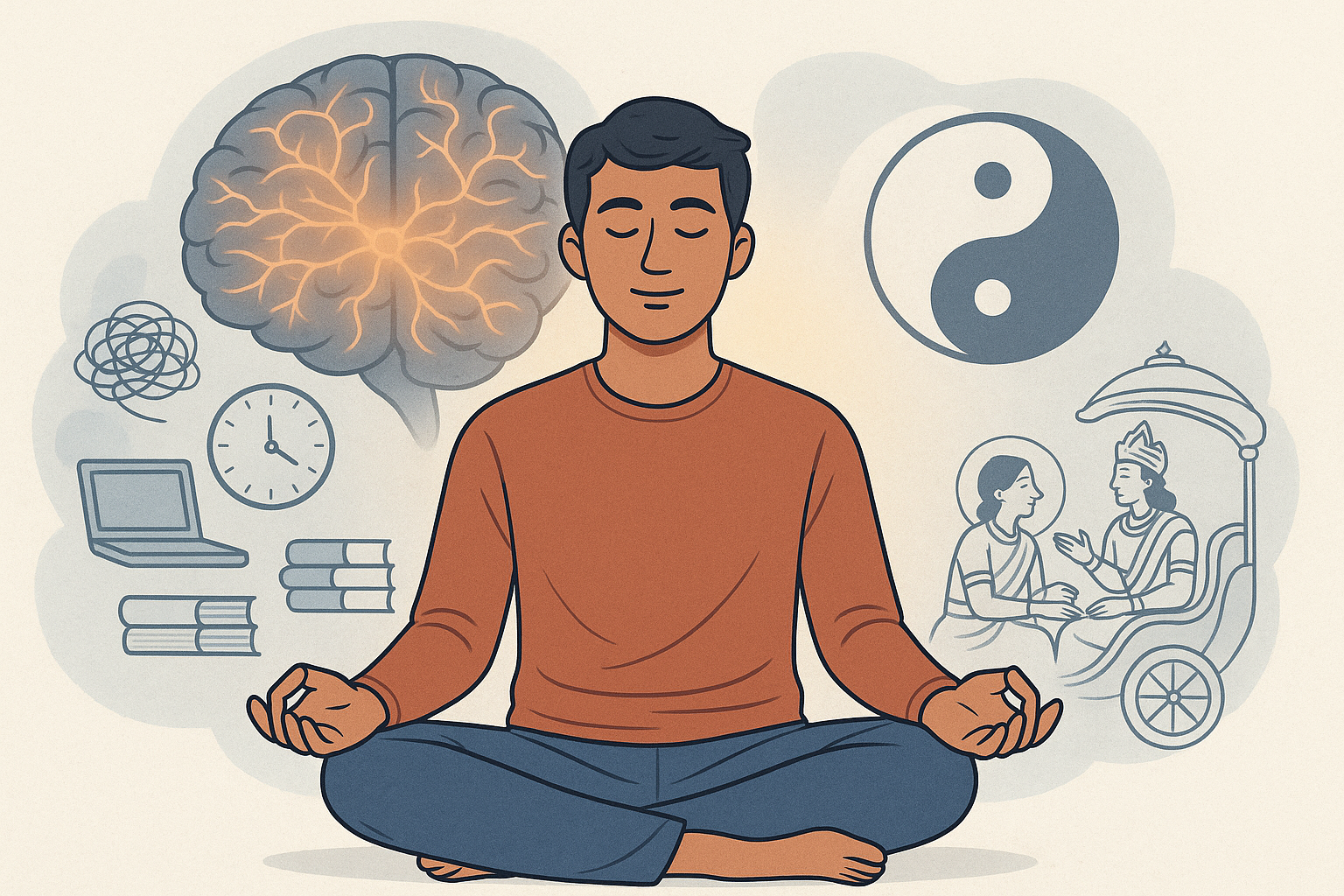



Very nice sir
Great and informative article respected sir ji.
Thanks dear
Nice
Wonderful information and very informative.
Thanks dear
Very Good sir
Your blog has become an indispensable resource for me. I’m always excited to see what new insights you have to offer. Thank you for consistently delivering top-notch content!
Thanks dear
Always helpful
Thanks dear
It’s very great and informative article.
Regards:
Thank you dear to always supporting us
What a great insightful thoughts to improve ourself. Please do share such post, we really need.
Thank you dear
Extremely helpful sir !!
Loved it✨
Thanks dear
Very helpful for the students,who prepared competitive exam as me,loved it
you are in reality a just right webmaster The site loading velocity is incredible It seems that you are doing any unique trick In addition The contents are masterwork you have performed a wonderful task on this topic
My brother suggested I might like this blog He was totally right This post actually made my day You can not imagine simply how much time I had spent for this info Thanks
hiI like your writing so much share we be in contact more approximately your article on AOL I need a specialist in this area to resolve my problem Maybe that is you Looking ahead to see you
My brother recommended I might like this web site He was totally right This post actually made my day You cannt imagine just how much time I had spent for this information Thanks
Wow superb blog layout How long have you been blogging for you make blogging look easy The overall look of your site is magnificent as well as the content
Your blog is a true hidden gem on the internet. Your thoughtful analysis and engaging writing style set you apart from the crowd. Keep up the excellent work!
you are in reality a good webmaster The website loading velocity is amazing It sort of feels that youre doing any distinctive trick Also The contents are masterwork you have done a fantastic job in this topic
Your blog is a breath of fresh air in the often stagnant world of online content. Your thoughtful analysis and insightful commentary never fail to leave a lasting impression. Thank you for sharing your wisdom with us.
I don’t think the title of your article matches the content lol. Just kidding, mainly because I had some doubts after reading the article. https://www.binance.com/id/register?ref=UM6SMJM3